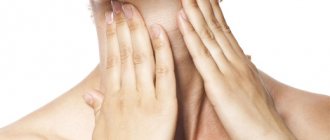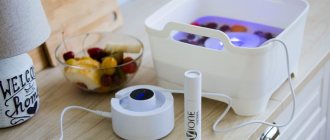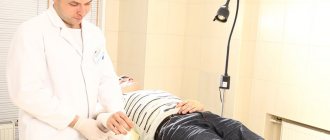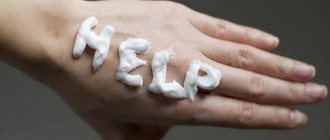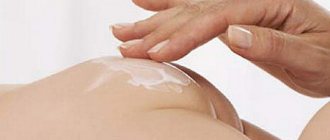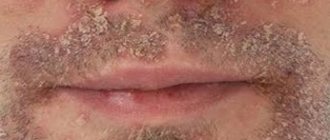A perfectly even tan is a dream for which many are willing to fry for hours under ultraviolet light. Bronze-golden skin seems to be a symbol of success and prosperity, when you can afford to relax at resorts all year round. A tanning studio, where you can get beautiful chocolate skin, will successfully replace sand and sun.
But sunbathing and solariums are not suitable for everyone. Some people develop white spots after sunbathing. They look unsightly. At a minimum, they are frustrating, and at maximum, they are frightening with the unknown. Where do they come from, should I worry, and what should I do with them?
Skin care after solarium
Few people know about this, but the culprit behind the popularity of a tanned body is Coco Chanel, who became the trendsetter for bronze skin tone in the early 20s of the twentieth century.
And after the shocking appearance of the bikini in the mid-40s, fashionistas dressed almost exclusively in tans quickly became commonplace. The big point was made by a German engineer named Wolf, who discovered the effect of artificial sun and invented the solarium in 1975. At the same time, the first effective sunscreens and skin care products after solarium appeared. There are not so many options for answering the question why we love visiting a solarium so much:
- so that with the onset of summer you can immediately start showing off in a short dress;
- so as not to look like a black sheep on overseas shores;
- In the autumn-winter period, visiting a solarium is one of the ways to give your skin a healthy look and treat your loved one with the vitamin of joy - vitamin D.
Artificial sun can give us a lot of positive things. And so that you get only positive emotions from it, it is enough to follow simple rules for caring for your skin after a tanning salon, the main meaning of which boils down to how to properly care for your skin after a solarium.
Contraindications to visiting a solarium
Contraindications are divided into general and medical. The first ones look like this:
- age less than eighteen years;
- excessively pale skin on the legs, back and entire body;
- the presence of excess freckles and moles;
- lactation or childbearing.
Medical contraindications are most often temporary:
- problems with the body's hormonal or reproductive systems;
- predisposition to melanoma and other types of cancer;
- taking medications that are contraindicated for prolonged exposure to the sun;
- having vitiligo, a disease associated with white or brown patches on the skin.
Consultations with a dermatologist, strict adherence to the doctor’s instructions and the rules of tanning with ultraviolet lamps are the key to the absence of age spots and obtaining a beautiful shade in safe conditions.
Why does my skin peel off after a tanning salon?
If your skin regularly peels off after a solarium, then the affordable pleasure of soaking up artificial ultraviolet light, alas, is not for you. Eliminate the possibility of photoderma - increased sensitivity of the skin to UV radiation. If such a misfortune happened to you only once, then it is probably due to the duration of the session or the power of the lamps used.
Advice:
Before going to the cabin, check with the administrator about the power of the lamps used and ask how long ago they were replaced. New lamps always “heat” more. Depending on the answer you receive, choose the optimal time for tanning.
Why does my skin itch after tanning?
If every time after tanning your skin itches and itches, then first of all, change your usual cream that you use “after”.
Recommendation:
You should not use untested skin care products, which are available in almost every solarium. It is easy to guess that there is practically no guarantee that the labels on the packaging will correspond to the contents. The answer to the question “why does your skin itch after tanning” is worth looking for inside the contents of such disposable products.
What are the symptoms of sunburn
Prolonged exposure to ultraviolet rays of natural or artificial origin can lead to sunburn, which manifests itself with the following unpleasant symptoms:
- First there is redness and swelling.
- The skin begins to peel off, forming blisters that gradually fill with liquid.
- Then the bubbles begin to peel off in pieces, leaving open wounds.
- At the last stage, open wounds become infected with pathogenic bacteria and fungi.
- Fever, dizziness, nausea and fainting are symptoms not only of sunburn, but also of heatstroke.
When the first symptoms of sunburn appear, you need to start providing first aid.
Why does my skin turn red after tanning?
Redness after tanning is normal. This is how our body reacts to ultraviolet radiation and increased temperature inside the cabin. Typically, skin redness after tanning subsides within a few hours. If this did not happen and the skin turned “very” red after the solarium, then you, in all likelihood, belong to the category of people who would rather burn than tan and have too sensitive skin. If, after a solarium, a red spot appears on the skin, then you should think about really serious protection and the consequences of such a tan. Your skin may also be red after tanning if you are taking medications that have a sensitizing effect. One way or another, if after a solarium, instead of an even tan, the skin remains red for a long time, and you realized that there is a period of difficult struggle ahead with the emerging pigment spots and other skin defects, then it is worth looking for answers why this happens not only using the Internet, but also by contacting see a dermatologist.
What are age spots?
Failure to follow the rules for visiting a solarium sometimes provokes disorders in a person’s skin. Spots of different colors, shapes and sizes form on the body. This is due to the fact that melanin, which is responsible for the appearance of pigmentation and its shade, is produced much more actively under the influence of ultraviolet radiation. The main problem is that melanin is distributed unevenly. Pigment spots are even white in color and they form in those who abuse the solarium. At first glance, the problem is not serious and indicates that the pigment has ceased to form. This is due to the fact that each individual produces melanin individually.
How to remove redness after solarium
What to do if your skin is red after tanning?
First of all, don't panic. You can try to remove redness after tanning using folk remedies or by resorting to the latest advances in cosmeceuticals.
Secondly, if your skin turns red after a solarium, then you should refrain from too frequent artificial tanning procedures. Thirdly, creams with an optimal panthenol content will help to quickly remove redness after tanning, so that the skin does not look “like cancer.” Fourthly, panthenol is accessible to everyone for the regeneration of skin cells. You can remove redness after tanning using universal panthenol cream or body milk.
Important:
To relieve redness after tanning, simply apply a small amount of panthenol cream to the problem area. It is strongly recommended not to use several products from different manufacturers at the same time in order to get rid of redness after tanning, such as products with a cooling effect combined with regenerating and moisturizing creams, or folk recipes with medications.
You can, be that as it may, get rid of redness both after sunbathing and after an unsuccessful visit to the solarium quite quickly. The main thing is to choose a truly effective and safe product.
How to get rid of age spots on the face and body
How to get rid of age spots?
First of all, you need to establish the main cause of pigmentation in order to select an effective treatment method. Next, we will consider cosmetic and folk methods for eliminating age spots after tanning.
External cosmetics
There is a wide range of cosmetics with a whitening effect on the market, which allows everyone to choose the best option for themselves. Cosmetic products contain active ingredients that whiten the skin. It is recommended to choose safe products that contain natural ingredients, such as lemon or cucumber extract. Preparations containing mercury are effective in bleaching, but they have a large number of contraindications and can cause an allergic reaction.
Traditional methods
Among the home methods for getting rid of age spots after tanning are the following:
- Lemon juice has a whitening effect. However, it cannot be used in concentrated form. Needs to be diluted with water. You can simply wipe problem areas or prepare masks. For better effect and moisturizing of the skin, add natural fermented milk products to lemon juice.
- Cucumber juice also perfectly whitens the skin and helps eliminate age spots. You can use both juice and pulp. We wipe problem areas with fresh juice or apply cucumber pulp for a few minutes.
- Chop fresh parsley to form juice. We wipe problem areas. Can be combined with fermented milk products to maintain the water balance of cells.
- Sauerkraut juice also perfectly evens out skin tone and eliminates growths after tanning. This is one of the best homemade recipes.
- Aloe juice relieves redness and swelling after sunbathing and accelerates the regeneration of affected tissues.
- Regular hydrogen peroxide perfectly whitens the skin. In this case, be sure to dilute it with water to avoid dry skin.
- White cosmetic clay not only eliminates age spots, but also tightens the skin, smoothes wrinkles, improves blood circulation, and restores youth and beauty.
It’s also interesting What you need to take for a trip to the solarium, how to prepare, pros and cons, contraindications
Alternative techniques
Among salon methods for getting rid of age spots after solarium, the following can be distinguished:
- Laser. Under the influence of the laser, melanin begins to break down, leaving healthy tissue. The main advantage of the procedure is that the laser affects only the affected tissues without affecting healthy ones. It is possible to completely get rid of tumors after tanning after a few sessions. The procedure has virtually no contraindications. The main thing is to strictly follow all the cosmetologist’s recommendations.
- Peeling. In a salon setting, a chemical peeling procedure is carried out, which removes the top layer of dead cells. Natural acids, such as malic or tartaric, are predominantly used to cleanse the skin of age spots.
- A liquid nitrogen. Under the influence of nitrogen, skin cells begin to gradually die and fall off, leaving healthy tissue.
How long will it take for the redness after tanning to go away?
The question of how long it will take for the redness to subside after a tanning salon is not always rhetorical. Let's try to find out together how long it will take to get rid of this scourge, how long on average the redness lasts after a tanning salon, and find out when the redness after a solarium will subside.
When you follow the general recommendations for getting rid of it, the redness from the tanning bed goes away quite quickly. By the way, the use of products with panthenol, when they are used directly during artificial tanning in a solarium, helps to significantly reduce the unpleasant sensation of skin tightness after a solarium and the redness will disappear without a trace. After applying the universal cream with panthenol, the redness goes away within a matter of minutes, so you can be in the solarium as much as you like, the main thing is to feel your own body.
Of course, there are so many people and so many opinions: for some, even 5 minutes of solarium is enough to claim that even after a couple of days the redness does not go away, but most of those who have used products with panthenol echo that after 5 days of regular use of the universal panthenol EVO cream, the skin is completely restored.
You can use proven “grandmother’s” methods and find out for yourself when the redness goes away after a solarium, for example, by wrapping yourself in a fermented milk coat made of sour cream. But, we think, this method is unlikely to be to anyone’s liking, if you can use EVO laboratoires products with panthenol.
Since there will always be many who want to see not so much your advantages as your shortcomings, you should not worry about how long it takes for the redness to subside after a tanning salon. The main thing is to listen sensitively to what your body says when you find yourself under the rays of artificial sun and use proven skin care products.
How to avoid appearing
The best way to solve the problem of age spots is to prevent their appearance, since they are difficult to remove.
Consult your dermatologist first. The doctor will tell you how often you can irradiate your skin with ultraviolet light.
Basic recommendations:
- take breaks between procedures;
- the duration of the session should not exceed reasonable limits;
- use high-quality cosmetic products, especially paying attention to the scalp;
- Avoid attending procedures while using antibiotics or hormonal drugs.
These tips, coupled with a visit to a dermatologist, guarantee that age spots on the face from solarium will not appear, as well as other side effects.


